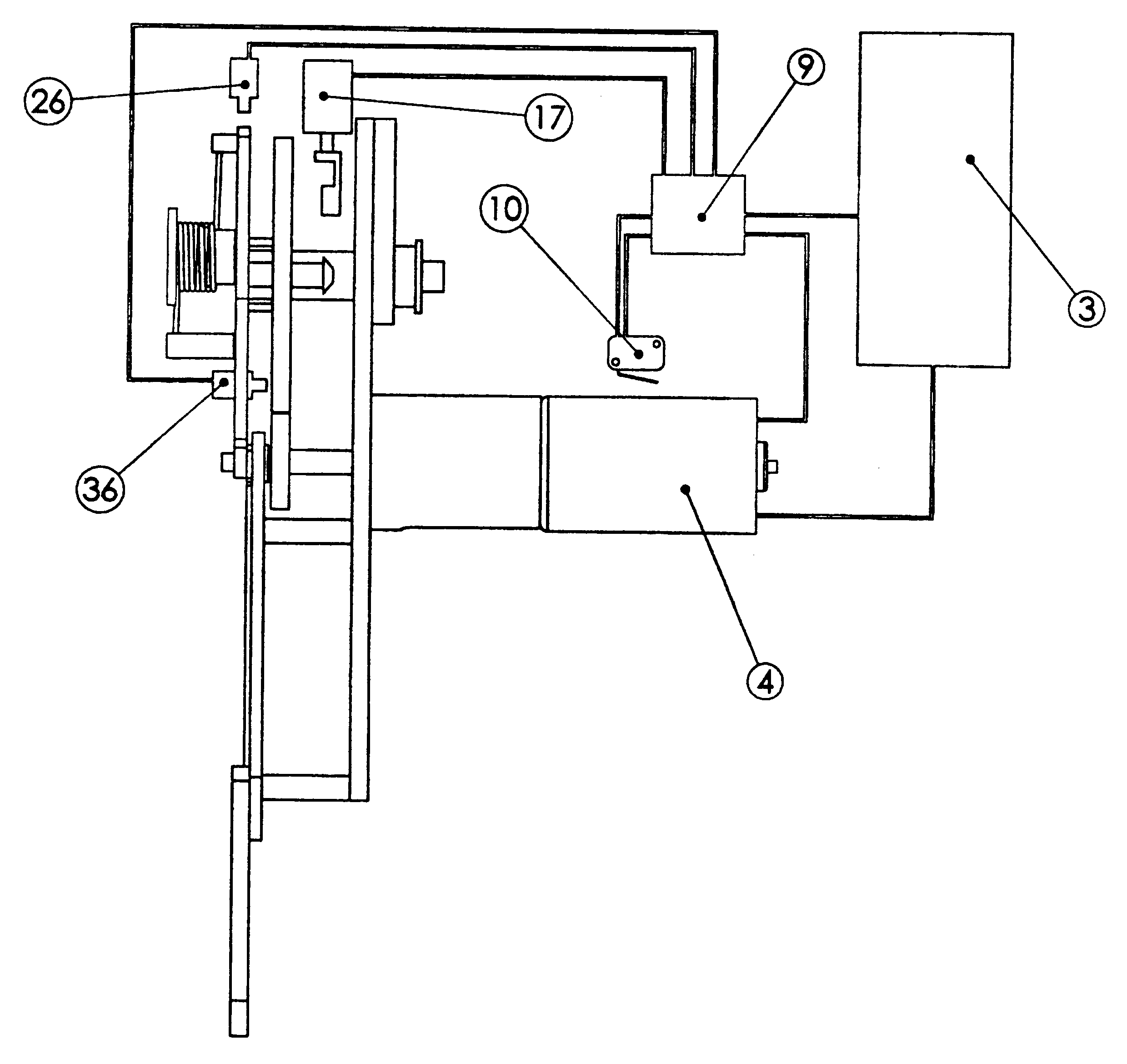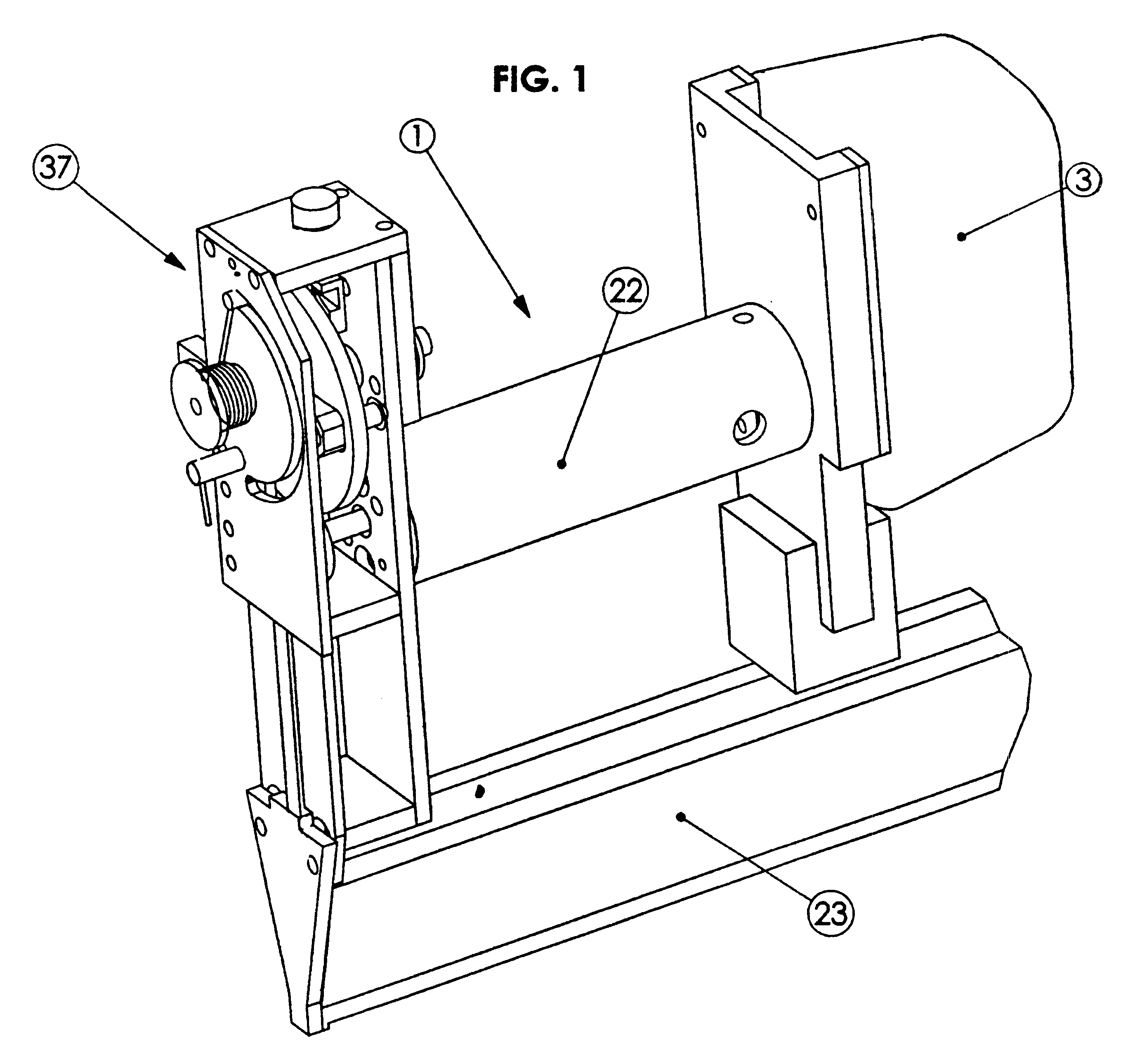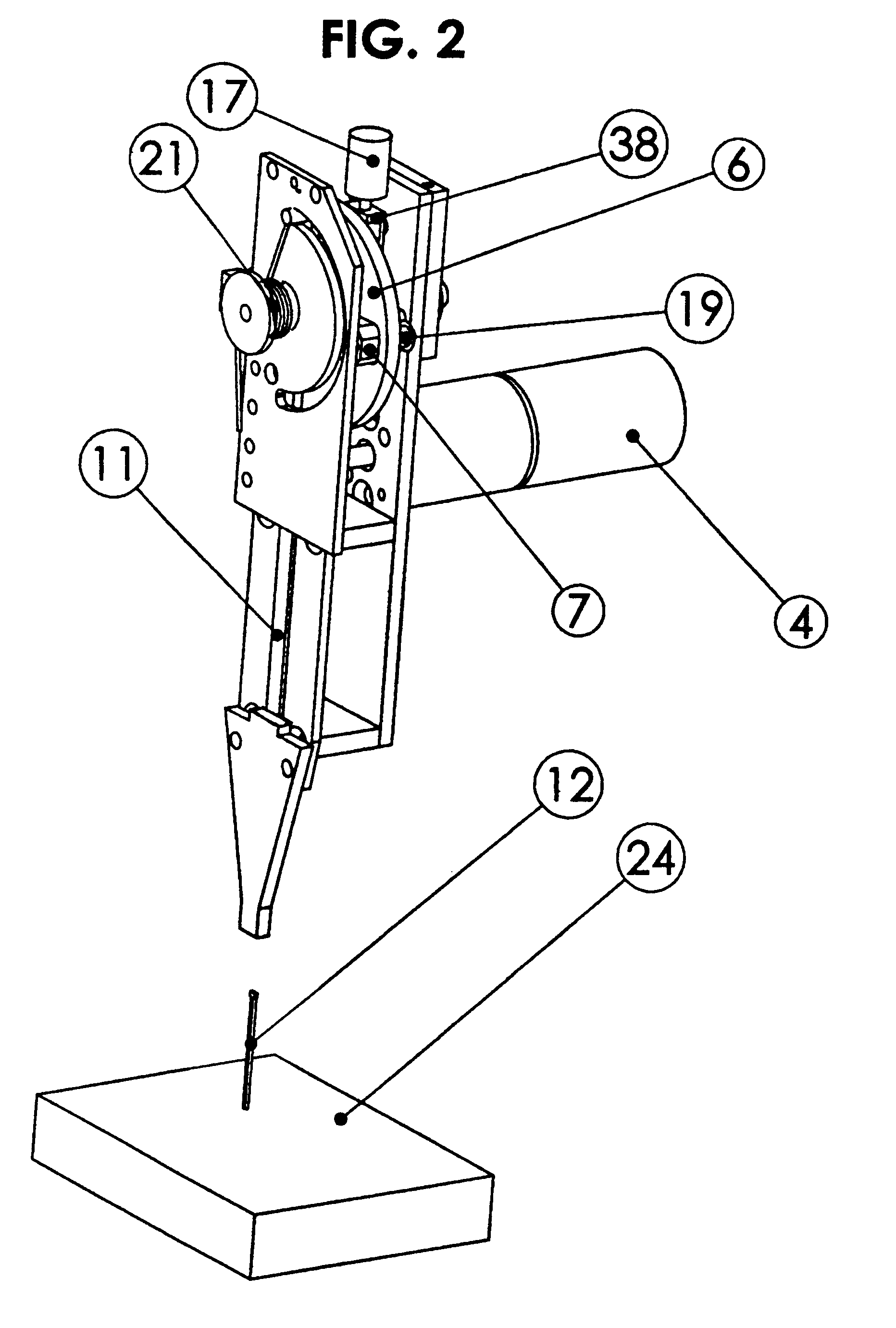Electrical motor driven nail gun
a motor driven, electric motor technology, applied in the direction of manufacturing tools, percussive tools, portable drilling machines, etc., can solve the problems of unsatisfactory requirements, large number of ampere-turns in the solenoid, and need for a fairly complicated assembly
- Summary
- Abstract
- Description
- Claims
- Application Information
AI Technical Summary
Benefits of technology
Problems solved by technology
Method used
Image
Examples
Embodiment Construction
of the Design
FIGS. 1-6 represent a preferred embodiment of a fastener-driving tool (1) for driving fasteners such as nails (12) into substrates (24) such as wood. Referring to FIG. 1, the preferred embodiment includes a drive unit that can deliver a force through a stroke such as, for example, a fastener-driving tool (1). The fastener-driving tool (1) comprises a handle (22), a feeder mechanism (23), and the fastener driving assembly (37). The feeder mechanism is typically spring biased to force fasteners, such as nails or staples, serially one after the other, into position underneath the nail-driving anvil. FIGS. 2-4 detail the fastener driving assembly. Referring to FIG. 2, the motor (4) is controlled over a cycle to drive a fastener (12) beginning by placing the fastener-driving tool (1) against the substrates (24), which are to be fastened, and actuating a switch (10) shown in FIG. 6. This cycle ends when the fastener (12) has been driven and the fastener driving assembly (37) ...
PUM
| Property | Measurement | Unit |
|---|---|---|
| Angle | aaaaa | aaaaa |
| Angle | aaaaa | aaaaa |
| Angle | aaaaa | aaaaa |
Abstract
Description
Claims
Application Information
 Login to View More
Login to View More - R&D
- Intellectual Property
- Life Sciences
- Materials
- Tech Scout
- Unparalleled Data Quality
- Higher Quality Content
- 60% Fewer Hallucinations
Browse by: Latest US Patents, China's latest patents, Technical Efficacy Thesaurus, Application Domain, Technology Topic, Popular Technical Reports.
© 2025 PatSnap. All rights reserved.Legal|Privacy policy|Modern Slavery Act Transparency Statement|Sitemap|About US| Contact US: help@patsnap.com



